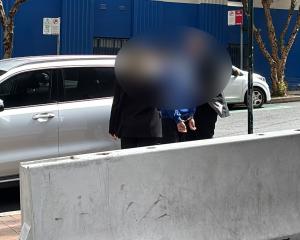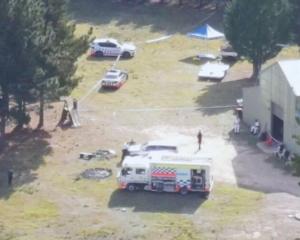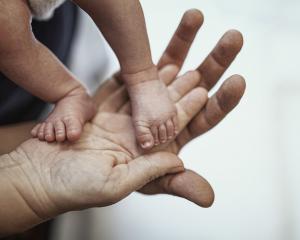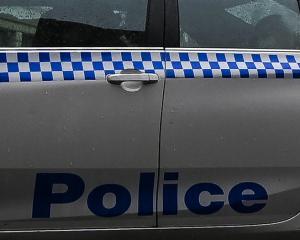
By Wednesday evening, the Rural Fire Service said seven people had died in fire raging through the south coast of New South Wales.
The RFS said two people were found dead were in cars, and a third was found by ambulance officers. Earlier in the day, RFS Commissioner Shane Fitzsimmons confirmed three people died on New Year's Eve, and a fourth person was missing, presumed dead.
Fanned by soaring temperatures, columns of fire and smoke blackened entire towns on Monday and Tuesday, forcing thousands of residents and holidaymakers to seek shelter on beaches. Many stood in shallow water to escape the flames.
The RFS also confirmed at least 176 homes had been destroyed. Some of the worst loses were suffered in Conjola Park, where 89 homes were destroyed, and Malua Bay, where 40 homes were lost.
In total, there have been at least 15 fire-related deaths across Australia since blazes broke out a few months ago, including volunteer firefighters, after a three-year drought in large parts of the nation created tinder-dry conditions.
Huge bushfires have destroyed more than 4 million hectares - an area larger than Japan - and new blazes are sparked almost daily by extremely hot and windy conditions and, most recently, dry lightning strikes created by the fires themselves.
Cooler conditions on Wednesday gave the country a moment to count the cost of the fires, although there were still more than 110 blazes in New South Wales alone on New Year's Day and thousands of firefighters on the ground.
Sydney was blanketed in thick smoke, reaching about 20 times hazardous levels, prompting health warnings. The smoke has also drifted to New Zealand where it turned the daytime sky yellow across the South Island on Wednesday.
NSW Premier Gladys Berejiklian said authorities were working to restore communications with areas cut off by the fires, and warned conditions will deteriorate again over the weekend.
"Weather conditions on Saturday will be as bad as they were" on Tuesday, Berejiklian told reporters in Sydney.
The death toll was likely to rise, Commissioner Fitzsimmons said. "We still have grave concerns for (a fourth person)," he told media. There is "limited access to the remote area to try to identify and confirm one way or the other the status of that person."
NSW police did not name the missing man, but said he was 72 years old and authorities have been unable to reach his home 50km north of Cobargo.
Known deaths were father and son Robert and Patrick Salway, who were attempting to defend their property on Tuesday, and and another man died in Yatte Yattah near Conjola Park.
"We are broken," partner Renee Salway posted on Facebook on Tuesday. "I will see you again Patrick, my best friend."
On Monday, 28-year-old volunteer firefighter Samuel McPaul died after his fire truck flipped near the NSW-Victoria border.
Fitzsimmons said there were "heavy tolls" in terms of property damage and destruction, particularly in areas of south of Nowra, around Batemans Bay and in Cobargo.
Cobargo was aflame on Tuesday and multiple main-street buildings were razed. Up to 50 properties around Lake Conjola have reportedly been destroyed, as well as significant losses in Fishermans Paradise, Broulee and Mogo.
"Not only are we seeing outbuildings and homes but we're seeing considerable community infrastructure (destroyed)," Fitzsimmons said. "We're looking at businesses, halls, there's reports of a number of schools, two or three schools that have been heavily impacted."
Bega Valley Shire Mayor Kristy McBain on Tuesday confirmed dozens of losses in her district after two days in which bushfires blackened the sky.
Fitzsimmons said damage had also been wrought in the Snowy Mountains and towards Tumbarumba, as well as on the NSW central coast.
Property inspectors would tour fire sites across NSW throughout Wednesday and authorities would be seeking to clear and open arterial roads.
Some of the worst-affected communities along the coast battled bushfires into Tuesday night with no power and limited telecommunications.
All power had been lost from South Nowra to Moruya and "potentially beyond", affecting at least 46,000 people and the supported telecommunications network.
Meanwhile major roads, including several parts of the Princes Highway, were likely to remain closed for some time due to hazards.
Late on Tuesday, environmentalist Greta Thunberg weighed in on the NSW fires, tweeting the ironic hashtag (hash)ThisIsFine with a video of a fire front passing over a Fire and Rescue NSW crew's truck.
The Wyoming crew had been cutting a path along a dark road south of Nowra before the fire front closed in on their flank and passed over them.
MASSIVE BLAZE IN VICTORIA
In the state of Victoria four people remained missing, Premier Daniel Andrews said on Wednesday, after a massive blaze ripped through Gippsland - a rural region about 500km east of Melbourne.

Mark Tregellas, a resident of Mallacoota who spent the night on a boat ramp, said only a late shift in the wind direction spared lives.
"The fire just continued to grow and then the black started to descend. I couldn't see the hand in front in my face, and it then it started to glow red and we knew the fire was coming," Tregellas told Reuters.
"Ash started to fall from the air and then the embers started to come down. At that point, people started to bring their kids and families into the water. Thankfully, the wind changed and the fire moved away."
Across Victoria five emergency warnings remain in place including four in East Gippsland from Bruthen to Mallacoota and one for a blaze at Corryong in northeast Victoria on the NSW border.
The destructive bushfires have burnt through more than half a million hectares and lightning continues to spark new blazes.
Power has been cut to more than 7000 properties at East Gippsland and more than 1800 in the northeast.
AusNet says it could take days to restore power because the fires are still burning and it is unsafe to attend and assess the extent of damage. Phones remain cut across much of the region.
MILITARY DRAFTED IN
With thousands of people still stranded, Australia's military has been drafted in to provide supplies and assist with evacuations in areas.
In Ulladulla, a small coastal town about 230km south of Sydney, many residents and holidaymakers were scrambling to get supplies, leading to long lines outside the few shops open on a public holiday.
Black Hawk helicopters, fixed-wing aircraft and naval vessels have all been deployed, along with military personnel.
The aircraft are expected to help move fire crews, supplies and facilitate evacuations as needed.
Naval vessels including the HMAS Choules left Sydney bound for the East Gippsland coast on Tuesday evening and training vessel MV Sycamore had also been deployed.
- AAP and Reuters
Comments
With the whole world watching and a total fire ban the authorities think its a great idea to hold a 6 million dollar fire works display while requesting assistance from other countries to help their firefighters..........how dumb can one be!












